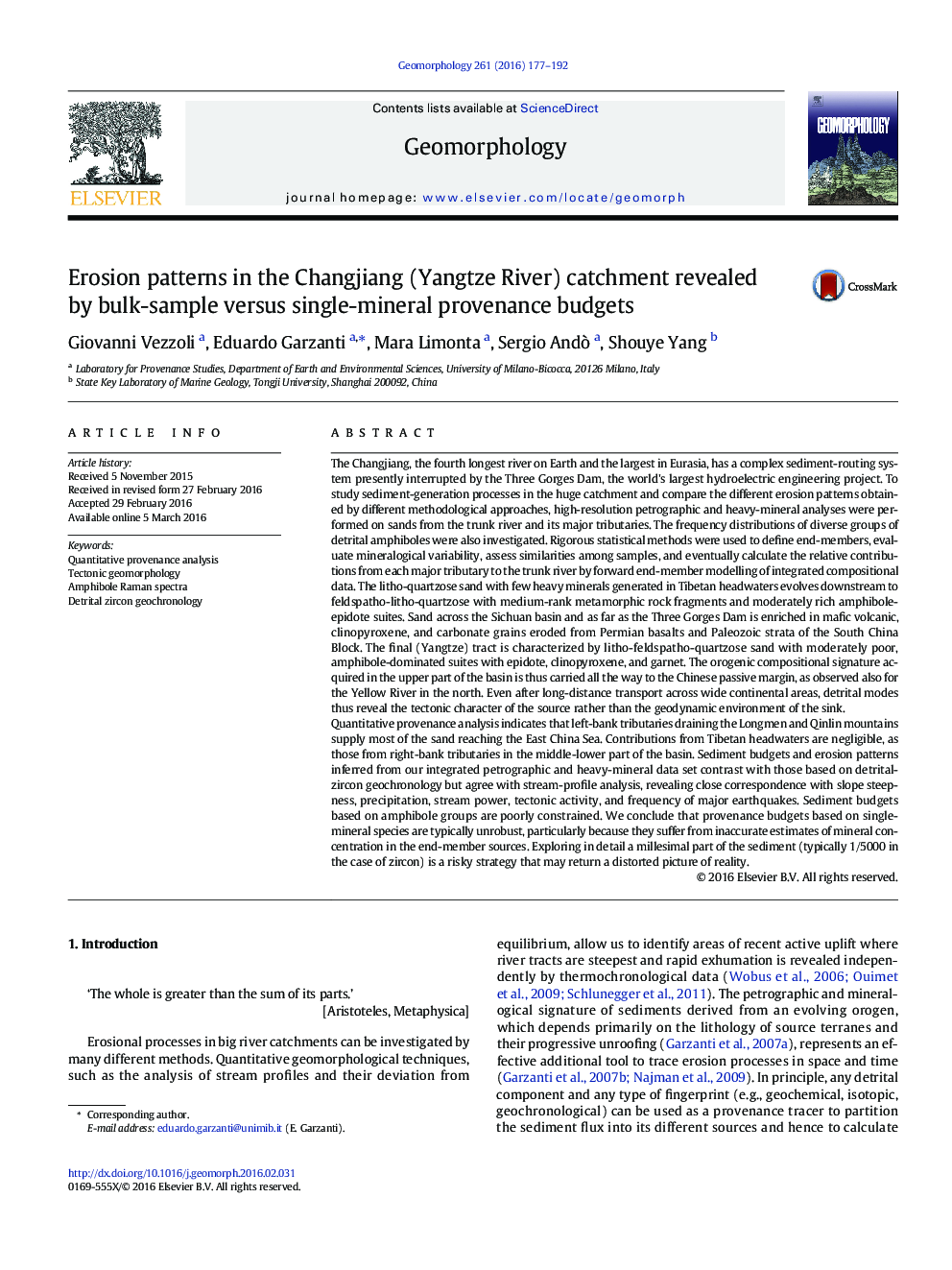| کد مقاله | کد نشریه | سال انتشار | مقاله انگلیسی | نسخه تمام متن |
|---|---|---|---|---|
| 4684055 | 1635388 | 2016 | 16 صفحه PDF | دانلود رایگان |
• Erosion of Longmen Shan and Qinlin belt supplies most sand to the East China Sea.
• Sand composition is not significantly changed after closure of the Three Gorges Dam.
• Orogenic compositional signature is preserved in Chinese passive margin sediments.
• Detrital modes reflect source-rock lithology, not geodynamic setting of the basin.
• Single-mineral provenance budgets are far less robust than bulk-sample budgets.
The Changjiang, the fourth longest river on Earth and the largest in Eurasia, has a complex sediment-routing system presently interrupted by the Three Gorges Dam, the world's largest hydroelectric engineering project. To study sediment-generation processes in the huge catchment and compare the different erosion patterns obtained by different methodological approaches, high-resolution petrographic and heavy-mineral analyses were performed on sands from the trunk river and its major tributaries. The frequency distributions of diverse groups of detrital amphiboles were also investigated. Rigorous statistical methods were used to define end-members, evaluate mineralogical variability, assess similarities among samples, and eventually calculate the relative contributions from each major tributary to the trunk river by forward end-member modelling of integrated compositional data. The litho-quartzose sand with few heavy minerals generated in Tibetan headwaters evolves downstream to feldspatho-litho-quartzose with medium-rank metamorphic rock fragments and moderately rich amphibole-epidote suites. Sand across the Sichuan basin and as far as the Three Gorges Dam is enriched in mafic volcanic, clinopyroxene, and carbonate grains eroded from Permian basalts and Paleozoic strata of the South China Block. The final (Yangtze) tract is characterized by litho-feldspatho-quartzose sand with moderately poor, amphibole-dominated suites with epidote, clinopyroxene, and garnet. The orogenic compositional signature acquired in the upper part of the basin is thus carried all the way to the Chinese passive margin, as observed also for the Yellow River in the north. Even after long-distance transport across wide continental areas, detrital modes thus reveal the tectonic character of the source rather than the geodynamic environment of the sink.Quantitative provenance analysis indicates that left-bank tributaries draining the Longmen and Qinlin mountains supply most of the sand reaching the East China Sea. Contributions from Tibetan headwaters are negligible, as those from right-bank tributaries in the middle-lower part of the basin. Sediment budgets and erosion patterns inferred from our integrated petrographic and heavy-mineral data set contrast with those based on detrital-zircon geochronology but agree with stream-profile analysis, revealing close correspondence with slope steepness, precipitation, stream power, tectonic activity, and frequency of major earthquakes. Sediment budgets based on amphibole groups are poorly constrained. We conclude that provenance budgets based on single-mineral species are typically unrobust, particularly because they suffer from inaccurate estimates of mineral concentration in the end-member sources. Exploring in detail a millesimal part of the sediment (typically 1/5000 in the case of zircon) is a risky strategy that may return a distorted picture of reality.
Journal: Geomorphology - Volume 261, 15 May 2016, Pages 177–192
